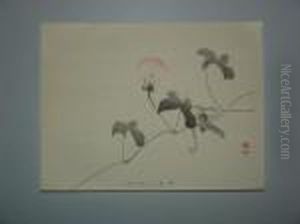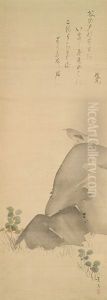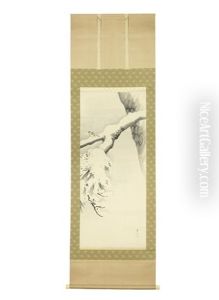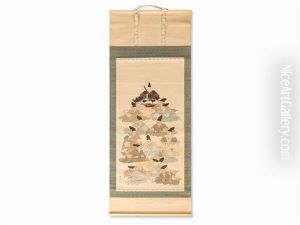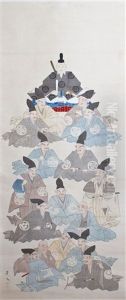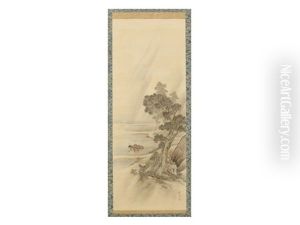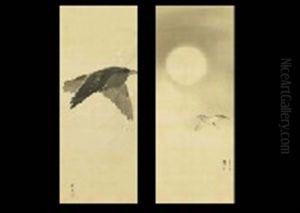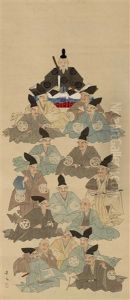Matsumura Keibun Paintings
Matsumura Keibun was a prominent Japanese painter of the late Edo period. Born in Kyoto in 1779, Keibun was originally named Go, and he later took the name Keibun as an artist. He was the younger half-brother of the famous painter and poet Matsumura Goshun, from whom he received significant artistic influence and tutelage. After his brother's death, Keibun succeeded him as the head of the Shijō school of painting.
The Shijō school, which means 'Fourth Avenue,' was a style that combined the realistic Maruyama school with the more expressive, literati-style Nanga school. Keibun's work is characterized by delicate brushwork and a light color palette, and he is particularly noted for his skill in kachōga, or bird-and-flower painting.
Throughout his career, Keibun contributed to the development of the Shijō school, blending Chinese and Japanese artistic traditions. He helped to sustain the school's prominence in Kyoto's art scene during a time when Japan was relatively isolated from the outside world. Keibun's paintings often exhibit a sense of serenity and a deep appreciation for nature, which was a hallmark of Japanese art during this period.
Keibun also taught a number of students, and his influence extended to the next generation of painters, who continued to evolve the Shijō style. Despite the political and social upheavals that would eventually lead to the end of the Edo period and the opening of Japan to the West, Keibun's art represents a period of refinement and beauty in Japanese traditional painting.
Matsumura Keibun passed away in 1843, leaving behind a legacy as a master painter whose work continued to inspire and influence the course of Japanese art beyond the Edo period. His works are held in numerous collections and are prized for their elegance and historical significance.

